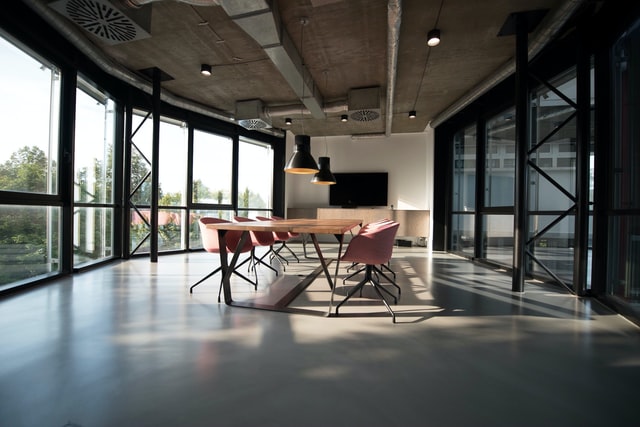There’s nothing more exciting than growing beyond your initial home office space. Not only will you and your employees have more room to operate, but you’ll also have the opportunity to sell to more customers. But before you jump in, you should consider how you’ll set up the space.
Hire a Professional Design Company to Achieve Your Vision
You have a big project ahead of you, and it can be difficult to estimate what you’ll need in your business office. If you aren’t fond of interior design, the process can take longer, or you may experience buyer remorse more often. If that sounds like you, consider hiring an expert.
A professional designer can give you an assessment, walk you through the office design development process, and deliver revisions on your request. But if you’re making significant changes and can’t visualize the end product, a designer can build off of your ideas.
5 Things to Remember Before Building Your Office Space
There are 32.5 million small businesses in the US, which accounts for 99.9% of all companies. If you’re ready to make the transition from your home to an office, remember the following.
1. Employees and Your Values
Without employees, you wouldn’t be able to scale, but without values, you can’t create unity and loyalty in your workforce. The ideal office elicits positivity, increases efficiency and productivity, and accommodates individual preferences for social spaces, private areas, and collaboration.
At the same time, your office must communicate your values. For example, if one of your values is “fun,” you need to equip your facility with games and a layout that encourages spontaneity.
2. Think of Your Overall Costs
It’s common for small business owners to underestimate the costs that come with purchasing and running an office. Even finished offices could become expensive if you need to restore the space, buy a large amount of furniture, upgrade your equipment, or build another wall.
Keep in mind that detailed build-outs will take a while, and delays are common. You can expect a build-out to take two to six months, so start planning now if you want to move in shortly.
3. Consider the Office Layout
While some small businesses start in the garage or in a renovated shed, you’ll eventually move up to an open or cubicle-designed office. When choosing your building, consider its size, the amount of storage, the number of windows, and if the location has a lobby or break area.
Most commercial real estate agents will have a copy of the office’s layout you can use to plan your space. Determine whether you can fit current and new hires in your office comfortably.
4. Branded Equipment and Decor
Modern offices are trending towards a hybrid or remote setup. If you’re giving your workers the opportunity to work from home, you can limit the amount of equipment you’re using. However, you should invest in ergonomic furniture, brand-focused artwork, and a secure server network.
Don’t forget to purchase branded office supplies, as they help you consider your company’s image. Plus, you’ll have useful items you can give to new hires immediately after onboarding.
5. Buy Quality and Go Green
Business owners should pay more attention to the quality of their items rather than the quantity. While quality items are more expensive up front, less costly supplies will eventually cost you more money in time and repairs. Higher-priced items are typically more efficient, as well.
Going green also brings a lot of benefits to your business, as you’ll reduce energy waste and possibly receive a rebate. It’s better to opt-in now to compete with other eco-friendly startups.
Photo by Nastuh Abootalebi on Unsplash



